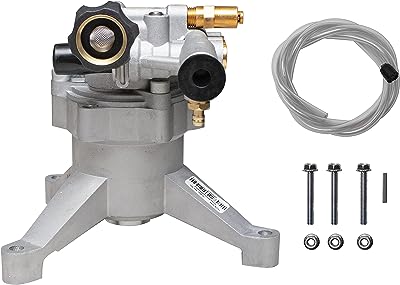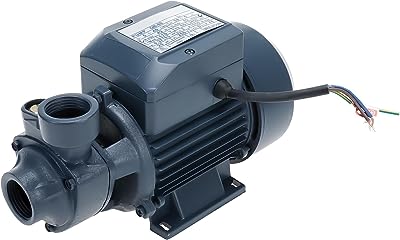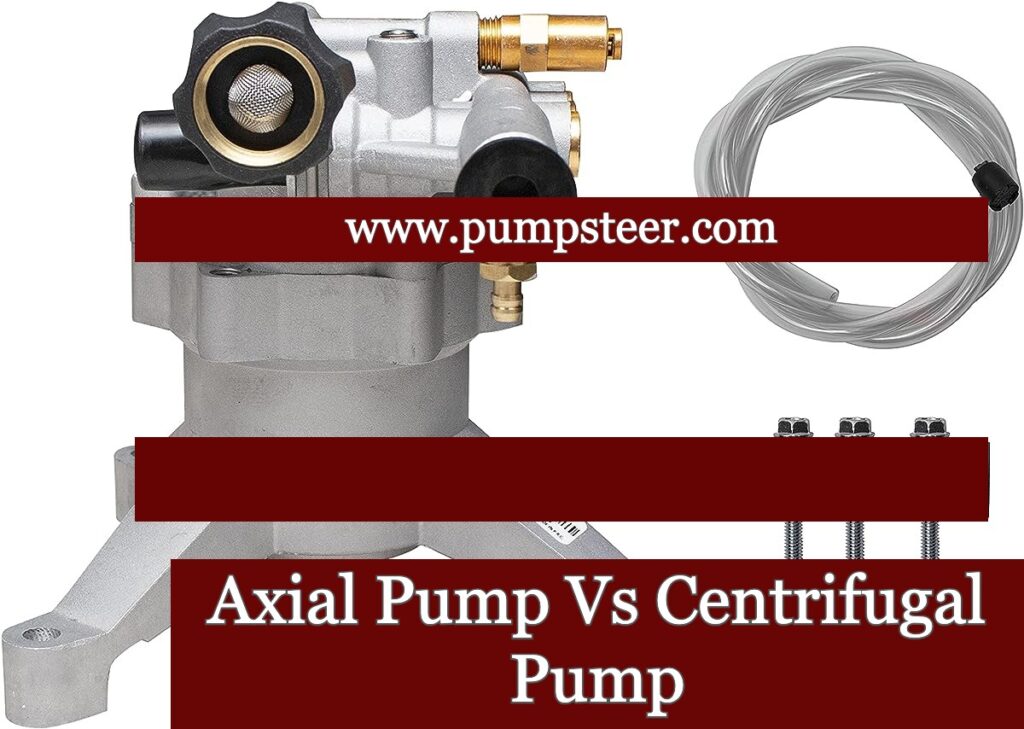The axial and centrifugal pumps are the most common pumps, used for many purposes but differently. Whether you harvest crops or have a chemical processing job, a high-end pump is required. With a high-performing pump machine, you can get the job done perfectly. Whether you are looking to buy an axial pump or a centrifugal pump, you should know their basic differences first.
The comparison of the Axial Pump VS Centrifugal Pump will tell you the differences.
Fluid Flow Direction: Both pumps have a different principle to work on and the configuration is also different. Hence, the fluids flow in different directions. Axial pumps usually direct the fluid parallel to the pump shaft axis. Centrifugal pumps, on the other hand, move the fluid perpendicular direction to the shaft axis.
Flow and Pressure: They both differ in pressure and flow rate. Propeller pumps have the capability to handle low-pressurized fluids or are used in low-pressure applications with higher flow rates. In contrast, the aerodynamic pumps are well-performing and handle higher pressure with low flow rates.
Installation Process: Centrifugal pump is easy to install compared to propeller pumps. Aerodynamic pumps have a flexible inlet and outlet piping configuration, allowing you to connect the pipe with the existing piping units. In opposition to this, axial pumps require additional space and more piping modifications.
Design: There is a huge gap between them regarding design. Aerodynamic pumps have a little bit complex design compared to Axial pumps. There are more components in the centrifugal pump than in its counterpart.
What are the Axial Pumps?

Pumps with rotating impellers are known as axial flow pumps or AFPs. with the rotating impeller, it has angled blades (vanes). These blades or vanes allow the fluids to move or run a straight line to the shaft axis. This kind of pump is made to perform an extensive amount of fluids with low pressure.
The working mechanism of the Axial pump is different than other pumping machines. First, the fluids enter the pump via the inlet and then flow through the spinning impeller. During the rotation of the impeller, the vanes push the fluids in an axial direction so that they can create a lift force. This force allows the fluids to move through the pump and exit the discharge.
There are several axial pumps right now including single-stage and multi-stage axial pumps. They differ in the impeller. Single-stage axial pumps have only one impeller whereas multi-stage has two or more. Also, multi-stage pumps pressurize the fluids more than one time and they deliver the fluids a lot quicker.
The great thing is this pump can pump fluids, especially water multiple times faster at a certain distance compared to others like aerodynamic pumps.
Pros
- Excellent flow rate.
- Short blade lengths ensure fewer aerodynamic losses.
- Easy to use and handle.
- Extremely low maintenance is required.
- Compact design ensures the fastest and easiest installation.
Cons
- Louder noise.
- Slightly expensive.
What Are Centrifugal Pumps?

A centrifugal pump is a pump that uses a hydraulic mechanism to transmit energy to the liquid by utilizing centrifugal forces. This pump is used for various purposes including water treatment, water supply, oil refining industries, power plants, municipal water systems, etc. It is best suited in areas where a little suction lift is necessary.
In the centrifugal pumps, there is an impeller. This impeller rotates the inner position of the casing. However, when the liquids get into the pump, the impeller starts to rotate by using centrifugal force. Then, the volute converts the fluid’s higher velocity into energy.
Like axial pumps, there are different types of centrifugal pumps. Notable among them are, chemical pumps, radial pumps, single suction pumps, and trash pumps are significant. Compared to Axial pumps, centrifugal pumps are considered to be the strongest and most durable.
Pros
- Quite energy-efficient.
- Durable and reliable.
- Versatile and can be used in multiple applications.
- No drive seal, no leakage fear.
- Maintain an even flow.
Cons
- A little bit more complex in design than its counterparts.
- Required slightly higher maintenance compared to the axial pump.
Axial Pump VS Centrifugal Pump: Design Or Style
These pumps are different in terms of their design. A centrifugal pump has a more complex design than an axial pump. There is a propeller-based impeller that runs in a casing. On the other hand, centrifugal pumps have a more complex design. There are different components like a shaft, impeller, casing, suction pipe, and deliver pipe.
Axial Pump VS Centrifugal Pump: Applications
Axial pumps and centrifugal pumps are used for different purposes. Typically, axial pumps have different applications. They are usually used in irrigation, and cooling units to circulate fluids through heat-transferring systems, condensers, etc. In addition, they are used in marine propulsion, hydroelectric power, moving flooded water to nearer waterways, etc.
In contrast, centrifugal pumps are used to deliver water in municipal areas, fire protection systems, oil and gas industries, chemical processing, food, and beverage manufacturing, and other general purposes.
Axial Pump VS Centrifugal Pump: Installation And Maintenance
Due to the centrifugal pump’s complex design and several components, it’s slightly tough to install and requires a little bit higher maintenance. Axial pump, in contrast, has a simple or streamlined design that is effortless to handle, use, install, and maintain. It is because the axial pump contains fewer components than the aerodynamics pump.
Axial Pump VS Centrifugal Pump: Costs
Though the price range between them varies from pump to pump, there is a huge gap in terms of the price tag. However, centrifugal pumps are more expensive than Axial pumps.
Final Touch
Ultimately, aerodynamic pumps and axial pumps are different types of pumps with different working principles or mechanisms. Each pump has its own unique characteristics. They are used for different purposes and in different areas. Axial pumps have a very simple design compared to its counterpart. Due to its sleek or compact design, it is less expensive, requires less maintenance, and installation is effortless.
On the contrary, a centrifugal pump is robust, efficient, durable, versatile, and can be used for various purposes. Overall, both pumps are good in different sectors. Hence, the choice between an Axial pump and VS centrifugal pump depends on you and the type of work you need to do.
Read also:







